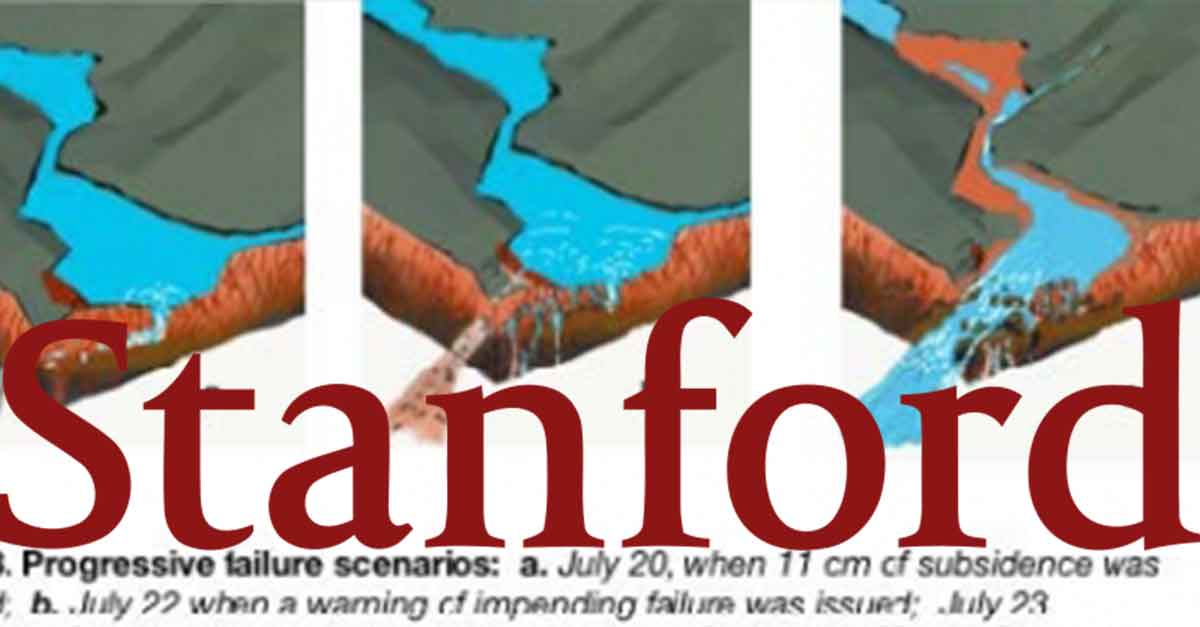Space data gleaned from satellites has been used to create a hypothesis on the cause of the collapse of the saddle dam D at the Xe Pian Xe Namnoy project in Attepeu province.
Bangkok-based professor Richard Meehan from Stanford University in the United States’ has been investigating the dam’s failure from Bangkok using new space technologies, according to a report published via the Blume Earthquake Engineering Center website on October 26.
According to the center, Meehan began his engineering career designing and building dams in Thailand and teaches at Stanford’s School of Earth Sciences.
“The failure hypothesis goes as follows: on the first filling of the reservoir, a wave of groundwater from the main reservoir pushed southwest eventually filling the dry basin behind the saddle dam with 20 m of water,” Professor Meehan wrote.
“The progress of the underground wave can be tracked by rising springs visible on cloud-piercing satellite images from the Sentinel 1 satellite.
“Rising water pressures, still within the normal operating specifications for the project but unprecedented in geological time, enlarged underground free-draining conduits within the naturally fragile basalt ridge line that supported the new saddle dam.
“With a rising water level and loss of support, the brittle earth fill dam began to sink into the void and crack extensively.
“The rising reservoir then cascaded over or through the fragmented crest, washing away the remnants of the dam and fifteen meters of erodible foundation and spilling, late at night, half a billion cubic meters of water and debris.
“This muddy flood plunged over the precipice of a downstream touristic waterfall onto small villages hundreds of meters below with tragic consequences.”
His report found that “satellite ground elevation data and imagery, when combined with readily available archival information from mineral explorations, along with experience on dam projects in similar terrain in nearby Northeast Thailand and in other comparable areas of tropical soils, show that this extended western arm of the reservoir was built on a sinkhole a dry basin that probably never, even over millennia, had retained any of the heavy (1-4 meters) summer rainfall that drenched the plateau, famous for coffee growing and waterfalls.”
“The new and immediately available global satellite data allow for a synthesis of failure explanations into a hypothesis that is both specific to the project but also carries broader implications for this type of development.”



